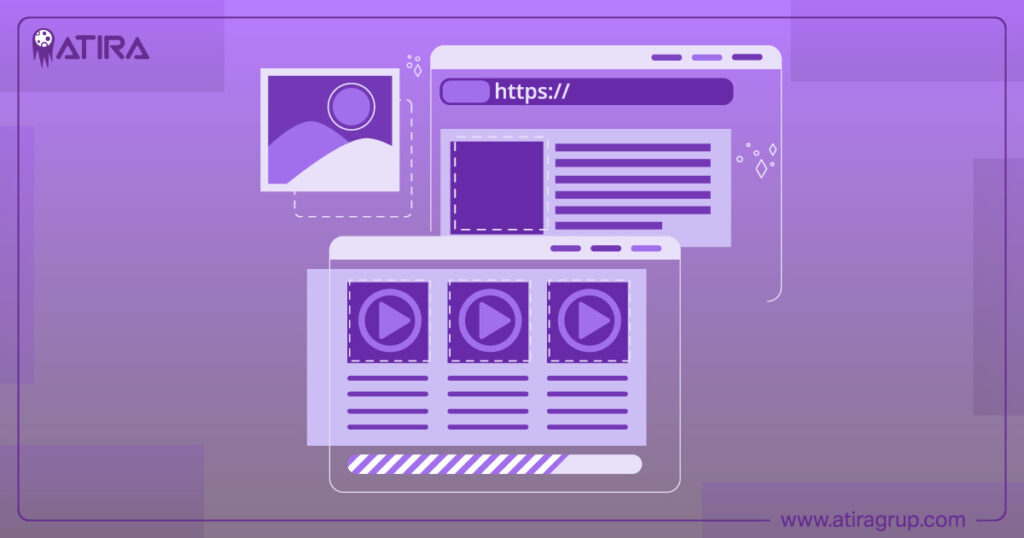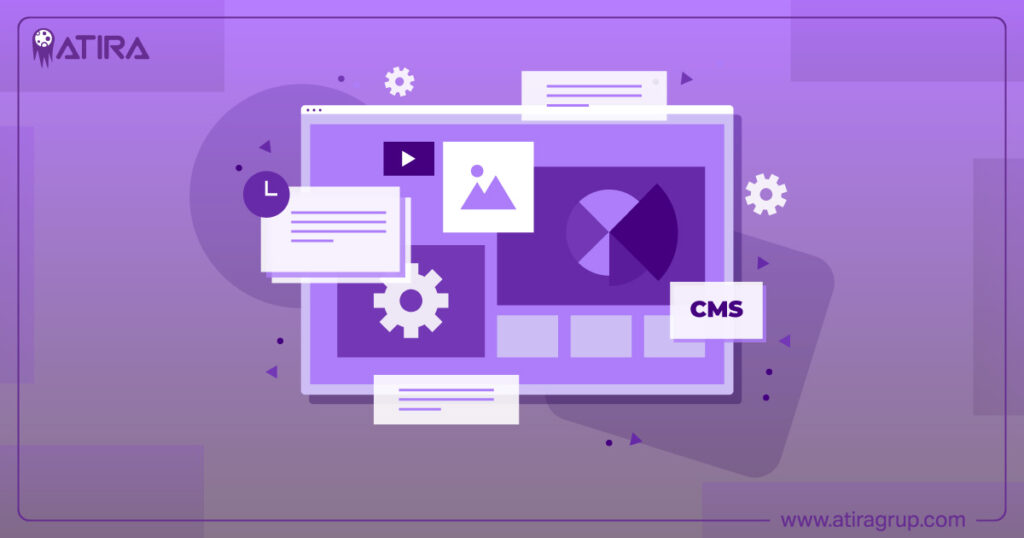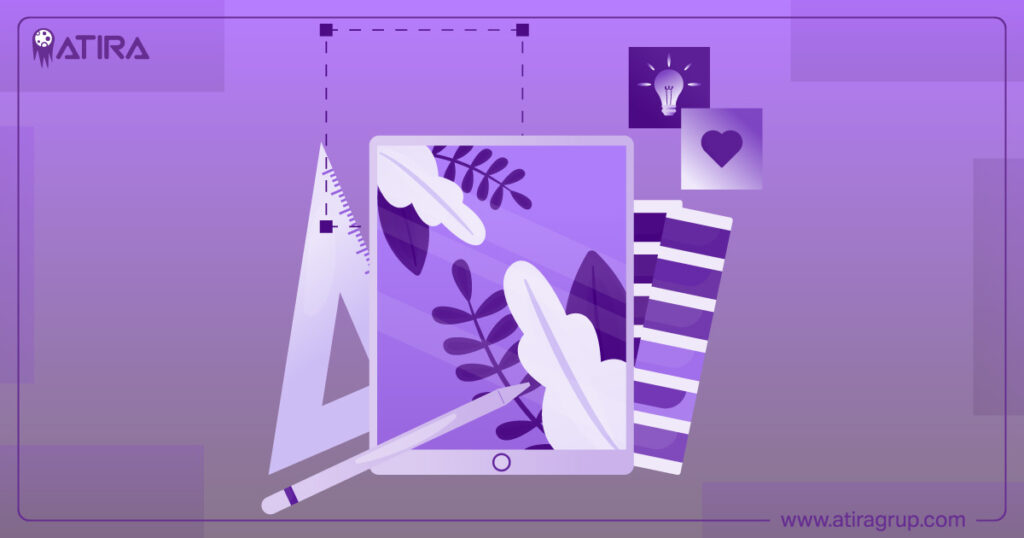Curious about creating your first website? Understanding the basics in web design is the first step. This guide will introduce you to essential concepts like layout, color schemes, typography, and responsive design.
You’ll also learn the roles of HTML, CSS, and JavaScript in crafting user-friendly websites. By the end, you’ll have a solid foundation to start designing and building engaging websites.
Key Takeaways
- Mastering web design fundamentals, including HTML, CSS, and JavaScript, is essential for creating user-friendly and engaging websites.
- User Experience (UX) and User Interface (UI) design are critical in web design, focusing on overall interaction satisfaction and the visual aspects of user engagement.
- Responsive web design ensures functionality across various devices, enhancing user experience through adaptive layouts and techniques such as media queries.
Table of Contents
Understanding Web Design Fundamentals
Web design is the art and science of creating user-friendly websites that are both aesthetically pleasing and functional. It involves understanding the end users, conducting target audience research, and creating user personas to ensure the design meets their needs. Effective web designing must fulfill its intended purpose while engaging visitors, enhancing trust, and encouraging user actions.

Mastering the basic knowledge lays a solid foundation for creating standout, high-performing websites.
What is Web Design?
Web design blends aesthetics and functionality to create websites. It involves understanding end users through target audience research and user personas to meet their needs. While coding (HTML, CSS, JavaScript) is often involved, platforms like WordPress and Wix simplify implementation. The goal is to create user-friendly, visually appealing websites that ensure a positive user experience.
Front-end development focuses on the aspects of web design that users engage with, ensuring it is visually appealing and usable. Information architecture in web design provides a clear organization that guides users and improves their overall journey.
Understanding web design fundamentals is crucial as it saves time on future corrections. Many platforms now offer free resources, making learning accessible to everyone.
The Role of Web Designers
Web designers prioritize the visual appearance of websites, ensuring aesthetics align with functionality for a better user experience. In-house designers must align their work with company branding and goals, often collaborating with marketing and product teams. A strong grasp of UX, UI, and SEO fundamentals is essential for creating effective designs.
Web designers create visually appealing, functional, and user-friendly websites. They are pivotal in the web development process, collaborating with a web developer to bring designs to life and ensure a seamless user experience.
Key Elements of Web Design
Key elements of web design include layout, navigation, color schemes, and typography. Layout and navigation shape user interaction with the site. Effective color schemes convey emotions and messages, using the color wheel and complementary colors.
Typography plays a crucial role in web design, affecting readability and user engagement. Visual hierarchy and common design patterns like Z-patterns and F-patterns guide user attention and improve usability.
Core Components of Web Pages
Core components of web pages are vital for creating functional, visually appealing websites. Aspiring web designers must grasp these elements. HTML, CSS, and JavaScript form the backbone of web design, each with its unique role.

Mastering these technologies enables the creation of visually appealing, interactive, and user-friendly complex websites.
HTML: Structuring Your Content
HTML (HyperText Markup Language) serves as the backbone of a web page, providing a framework for organizing content. It enables the creation of various elements in a website, including headings, paragraphs, links, and images. HTML tags control the display of different types of content, creating a hierarchy and ensuring that the content is accessible to users.
Header tags like H1, H2, and H3 help create content hierarchy, which can influence search engine rankings.
CSS: Styling Your Website
CSS (Cascading Style Sheets) controls the visual presentation and layout of web pages. It lets designers apply styles like fonts, padding, alignment, and colors to HTML elements. Using a css file separates content from design, simplifying updates and maintenance.
CSS enhances the visual appeal of websites, making them more engaging and user-friendly.
JavaScript: Adding Interactivity
JavaScript enhances user experience by making web pages interactive. Developers can add elements like animations, form validations, and event-triggered actions. JavaScript enables dynamic content that responds to user actions, significantly boosting engagement and satisfaction.
JavaScript is crucial in modern web design, bringing web pages to life. Incorporating interactive elements creates a more immersive and engaging user experience, enhancing usability and making the website more memorable and enjoyable to navigate.
Principles of Good Visual Design
The principles of good visual design are crucial for creating websites that are both aesthetically pleasing and functional. Understanding and applying these principles enables the creation of visually appealing, user-friendly designs that stand out.

This section will cover visual hierarchy, color theory, and typography, which are essential components of good visual design.
Visual Hierarchy
Visual hierarchy helps prioritize content by using size, color, and contrast. It directs the viewer’s attention by organizing elements according to their significance. A good visual hierarchy makes content easier to perceive, ensuring that users can quickly find the information they need. Mastering visual hierarchy leads to more intuitive and user-friendly designs.
Effective visual hierarchy enhances user experience by highlighting important elements, making website navigation easier. This principle is essential for creating visually appealing and functional designs.
Color Theory in Web Design
Color schemes significantly convey brand messages and evoke emotions. Understanding color theory helps in selecting palettes that convey desired emotions and create cohesive visual designs.
Mastering color theory enables the creation of visually appealing and emotionally engaging websites.
Typography
Typography is crucial in web design, affecting readability and user engagement. Effective typography improves readability and enhances emotional connection with the audience. Tasteful and stylized typography adds to the website’s overall aesthetic.
Good typography ensures content is easy to read and understand, increasing user engagement. This principle is fundamental for creating designs that are both functional and aesthetically pleasing.
User Experience (UX) and User Interface (UI) Design
User experience (UX) and user interface (UI) design are critical components of web design. UX focuses on the overall interaction experience, while UI focuses on the visual aspects users engage with.

Understanding and applying these principles results in user-friendly websites that are visually appealing and functional.
Basics of UX Design
UX design focuses on improving user experience and ensuring navigation satisfaction by understanding user needs. The principle behind UX design is keeping user needs in mind to improve interactions. User flows represent the paths users take through a design, helping prioritize critical sections and ensure seamless access. Usability testing evaluates how intuitive and user-friendly a website is for visitors, highlighting areas for improvement.
Effective UX design creates engaging user experiences while ensuring high conversions. Focusing on user needs and interactions results in websites that are both functional and enjoyable to use.
Essentials of UI Design
The focus of UI design is creating visual interfaces for software applications. Typography is considered important in UI design because it’s crucial for communication, sometimes even more than visuals. User interface design involves mechanisms that enable interaction with technology, including the creation of interactive elements such as buttons and menus that facilitate user engagement.
Successful user interface design ensures users can easily see available functions for effective navigation and interaction. Mastering UI design results in visually appealing, user-friendly interfaces that enhance the overall user experience.
Responsive Web Design
Responsive web design ensures that websites function effectively on a variety of devices. This section will cover the importance of responsive design and techniques to achieve it, ensuring that your website is accessible and user-friendly across different screen sizes.

What is Responsive Design?
Responsive design is a method of designing websites that adjust to various screen sizes. The essence of responsive web design is to maintain a consistent appearance across devices. It enables web pages to be viewed effectively on various devices, providing an optimal viewing experience.
Responsive design enhances usability by adapting web interfaces to different screen sizes, improving user navigation.
Techniques for Responsive Web Design
Media queries enable the application of different styles based on device characteristics like width and resolution. They are essential in responsive design as they help apply different styles based on the device’s characteristics, ensuring optimal presentation. By mastering these techniques, you can create websites that are visually appealing and functional across various devices.
Responsive design techniques make your website accessible to a wider audience, enhancing user experience and engagement. This principle is fundamental for creating modern, user-friendly websites.
Tools and Resources for Web Designers
Web design tools are crucial for effectively creating and managing websites. This section will outline the various tools and resources available for web designers, including code editors, design tools, and online learning platforms.

Code Editors and IDEs
Code editors and IDEs are primarily used for writing and editing code in various programming languages. Common features of code editors and IDEs include syntax highlighting and auto-completion, which help streamline the coding experience. These tools improve coding efficiency and accuracy.
Design Tools
Choosing the right design tools early avoids the need to relearn later. Wireframes, depicting the location of headings, text, visuals, forms, and other elements, are fundamental. They create a consistent experience and structure layouts, helping visualize the final product before development.
High-fidelity wireframes represent the final design layout and guide the development of user interfaces. Prototypes replicate key elements like images, interactions, content, and other essential components, allowing designers to test and refine their designs before implementation.
Tools like Figma, known for its collaborative features, allow multiple users to work on designs in real-time. Adobe XD supports integration with other Adobe products, enhancing the design workflow and enabling more efficient design and prototyping processes.
Mastering these design tools results in more effective, visually appealing web designs that meet user needs and business goals.
Online Learning Platforms
Online courses and design software documentation are valuable resources for learning web design. Available online resources include free online courses, tutorials, and forums, which provide community support and practical advice for web development learners.
Project-based learning in online courses helps reinforce web design skills, making it easier to apply theoretical knowledge in practical scenarios. Finding a mentor who specializes in the type of design you admire can provide feedback, identify strengths and weaknesses, and share expertise.
Testing and Launching Your Website
Preparation is crucial before launching your website to avoid complications. This section will cover the steps necessary for testing and launching a website, ensuring that it meets user expectations and performs reliably.

Testing Your Website
Testing ensures your website meets user expectations and performs reliably. Functionality testing checks that all website features operate as expected, while compatibility testing verifies that the website works consistently across various browsers and devices. Cross-browser testing is crucial to ensure a uniform user experience across different web browsers. Implementing both functionality and compatibility testing enhances the overall quality of your website.
Thorough website testing identifies and corrects issues before launch, ensuring a smooth user experience. This step is essential for delivering a reliable and efficient website.
Quality Assurance
Quality assurance is critical as it ensures that all aspects of a website meet specific standards before launch. Delivering a reliable and efficient website hinges on rigorous quality assurance processes, which enhance user satisfaction by ensuring a seamless and intuitive user experience.
Launching and Maintenance
Errors, functionality, and user experience must be checked prior to the website launch. Best practices for launching a website include thorough pre-launch testing to identify and correct any issues.
The final step in the web development process is launching and maintenance, with regular updates needed to keep the website up to date and running smoothly.
Career Pathways in Web Design
Web design offers various career opportunities, with high demand as businesses go online. This section will explore different career pathways, including freelancing, working in web development agencies, and being an in-house web designer.

Freelance Web Designer
Freelancing offers the chance to select projects that align with personal interests, enhancing job satisfaction. Freelance web designers can earn similar salaries to full-timers by showcasing their portfolios and networking effectively. This pathway provides flexibility and the opportunity to work on diverse projects, making it an attractive option for many designers.
However, freelancing also comes with challenges, such as finding clients and managing multiple projects simultaneously. Successful freelance web designers need to be self-motivated and skilled at marketing themselves to potential clients.
Working in Web Development Agencies
Web development agencies specialize in developing websites, providing the necessary expertise and resources for website creation. Individuals working at these agencies are expected to contribute to various aspects of website development, from design to implementation. This pathway offers the opportunity to work on a wide range of projects and collaborate with other professionals in the field.
Working in a web development agency can be a great way to gain experience and build a diverse portfolio. It also offers the stability of a full-time job with opportunities for professional growth and advancement.
In-House Web Designer
In-house web designers benefit from a stable work environment and ongoing opportunities for professional growth within a company. They often have the chance to work on a diverse range of projects throughout their employment.
In-house web designers are responsible for collaborating with other departments to align web design with company goals and ensuring their designs are user-friendly and responsive across various devices. They play a crucial role in maintaining the website’s aesthetic and functional aspects to enhance the user experience.
Summary
Mastering the basics of web design is essential for creating visually appealing and user-friendly websites. By understanding the fundamentals of web design, core components of web pages, principles of good visual design, and the importance of UX and UI, you can create websites that stand out and perform well. Utilizing the right tools and resources, thorough testing, and exploring various career pathways can set you on the path to becoming a proficient web designer. Embrace the journey, keep learning, and let your creativity shine in the world of web design.
Related articles:
Mastering Hierarchy in Web Design: Top Principles and Practices
Top Tips for Mastering Typography in Web Design
Frequently Asked Questions
What is the role of a web designer?
A web designer is responsible for the visual aesthetics and functionality of websites, ensuring that the design reflects the brand while optimizing user experience. This role is crucial in creating engaging and user-friendly online spaces.
Why is responsive web design important?
Responsive web design is important because it ensures websites function effectively on various devices, enhancing usability and providing an optimal viewing experience. This adaptability is crucial in today’s multi-device environment.
What are the key elements of web design?
The key elements of web design are layout, navigation, color schemes, and typography, as these aspects significantly impact user interaction, readability, and overall engagement with the site.
What tools are essential for web designers?
Essential tools for web designers encompass code editors and integrated development environments (IDEs) for coding, alongside design tools for wireframing and prototyping, and online learning platforms for ongoing education.
How can one start a career in web design?
To embark on a career in web design, focus on mastering the fundamentals of the field, creating a robust portfolio to showcase your skills, and consider various career options like freelancing, agency work, or in-house positions. Taking these steps will help you carve a successful niche in web design.


